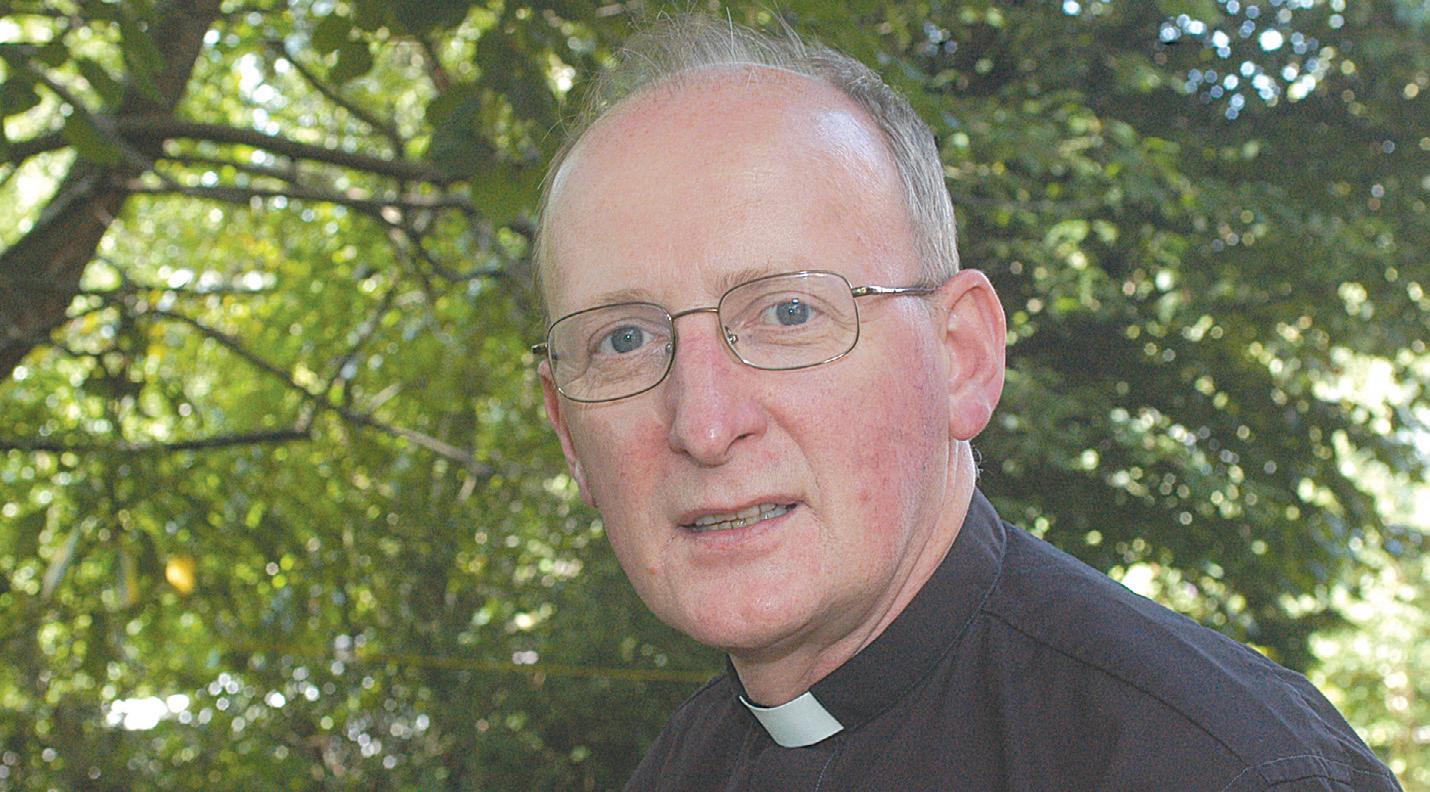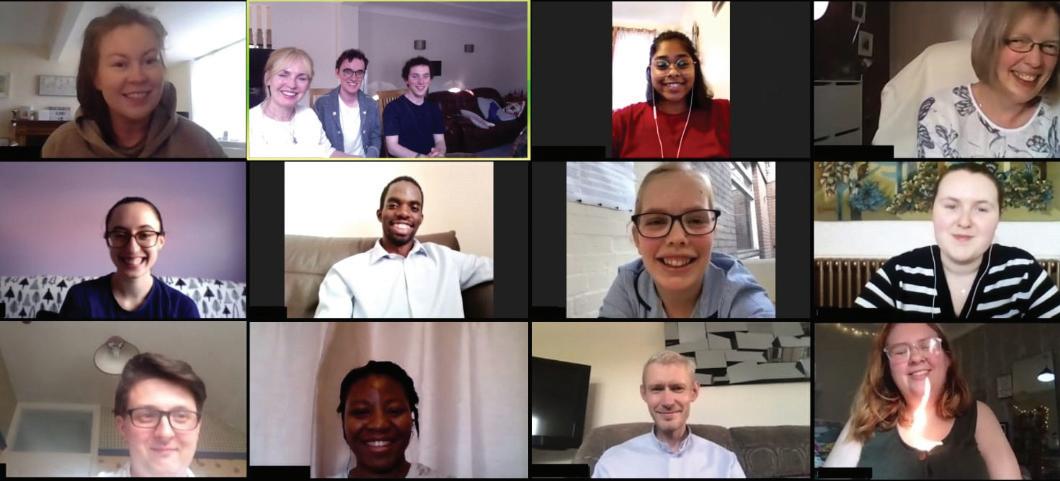
13 minute read
News
News diary
If you’ve got any news from your parish that you’d like featured e-mail us with the details at: catholicpictorial@rcaol.co.uk
Advertisement
Something to look forward to
Over the past year and a half Churches Together in the Merseyside Region (CTMR) brought together a gathering of young adults aged 18+ from across Merseyside. Rebecca, one of the members of the group says: ‘The CTMR Group is filled with the most amazing and wonderful people. Since the beginning, it has grown and become more than just a
group of young adults but a family...This group is something I have been missing and it is so important…to find people of a similar age to grow and learn together. Cynthia said: ‘Being part of the CTMR group has been such a wonderful experience. I have the opportunity to meet, learn, and socialise with Christians from other denominations and it's been great knowing that there are other people with whom I can share my faith’. It is ‘a place for friendship, support and fellowship that is a blessing to be a part of’, Chloé observed and Peter experienced: ‘this is something to look forward to during COVID-19’. Taras, a young priest commented: ‘Having been raised in an atheistic society (Soviet Union), I am grateful to be part of this group, members of which eagerly profess their Christian faith. It is a great joy to see young people from different Christian backgrounds coming together, sharing their gifts and creating a community that transcends denominational borders’. The group would be delighted to welcome other young adults aged 18+ to come and join the zoom meetings. If you would like to know more, please contact Veronica email: veronica@ctmr.org.uk or contact Elisabeth at the CTMR office Tel: 07394 075951 (WhatsApp is fine).
Pope Francis appoints new Apostolic Nuncio to Great Britain
Pope Francis has named Archbishop Claudio Gugerotti as Apostolic Nuncio to Great Britain. Claudio Gugerotti was born in Verona, Italy, in 1955 and ordained a priest of the Diocese of Verona in 1982. He studied Eastern Languages and Sacred Liturgy and was a professor of Patristics, Eastern Liturgy at the Institute of Ecumenical Studies in Verona from 1981 to 1985. In 1985, he was appointed as an official working at the Congregation for the Eastern Churches and he became its Undersecretary in 1997. He has also taught at the Pontifical Oriental Institute. On 7 December 2001, Pope St John Paul II appointed him Apostolic Nuncio to Georgia and to Armenia. He was also subsequently appointed Apostolic Nuncio to Azerbaijan on 13 December. He received his episcopal consecration by Pope St John Paul on 6 January 2002 appointing him to the Titular See of Ravello. Pope Benedict XVI appointed him Apostolic Nuncio to Belarus in
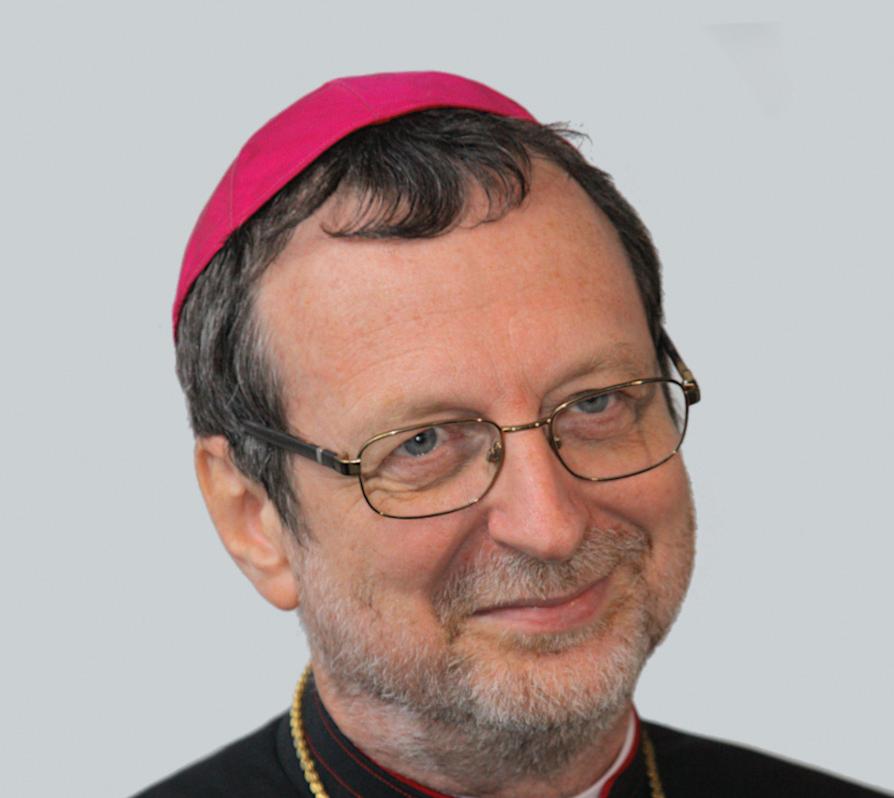
2011 and Pope Francis appointed him Apostolic Nuncio to Ukraine in 2015. The previous Nuncio to Great Britain, Archbishop Edward Adams, retired last January. The Apostolic Nuncio is the representative of the Holy See at the Court of St James’s and has the rank of ambassador.
Not built to last?
When the foundation stone for the Cathedral was laid in 1933 the city surveyor’s department allowed a temporary altar to be erected. The attendance for the ceremony was expected to be large and the former workhouse was by this stage a demolition site. The Cathedral
For the first time in its history the Metropolitan
Cathedral was closed to the public for over three months from 23 March to 1 July this year. The
Archdiocesan Archivist,
Neil Sayer, looks back to a time when 40,000 people flocked to the
Cathedral site for the laying of the Foundation
Stone of the Lutyens
Cathedral and a temporary altar was needed for the occasion. A lack of water is a daily problem for people living in the West Bank. Families in Bethlehem can get access to fresh water just once every 25 days, which highlights the importance of a new initiative by the Friends of the Holy Land (FHL) charity. FHL launched a project to fund water tanks for Christian families in Bethlehem and, working in tandem with the Milanbased Association pro Terra Sancta, they have successfully put the tanks in place. The water shortages are caused by the inefficiency of the distribution system and the management of the water network. As authorities were granted permission for the altar to stand ‘for a period of four years’. Some readers may remember it still presiding over the Crypt building site well into the 1950s. The picture shows the altar just before its first use: some curious nuns are in the
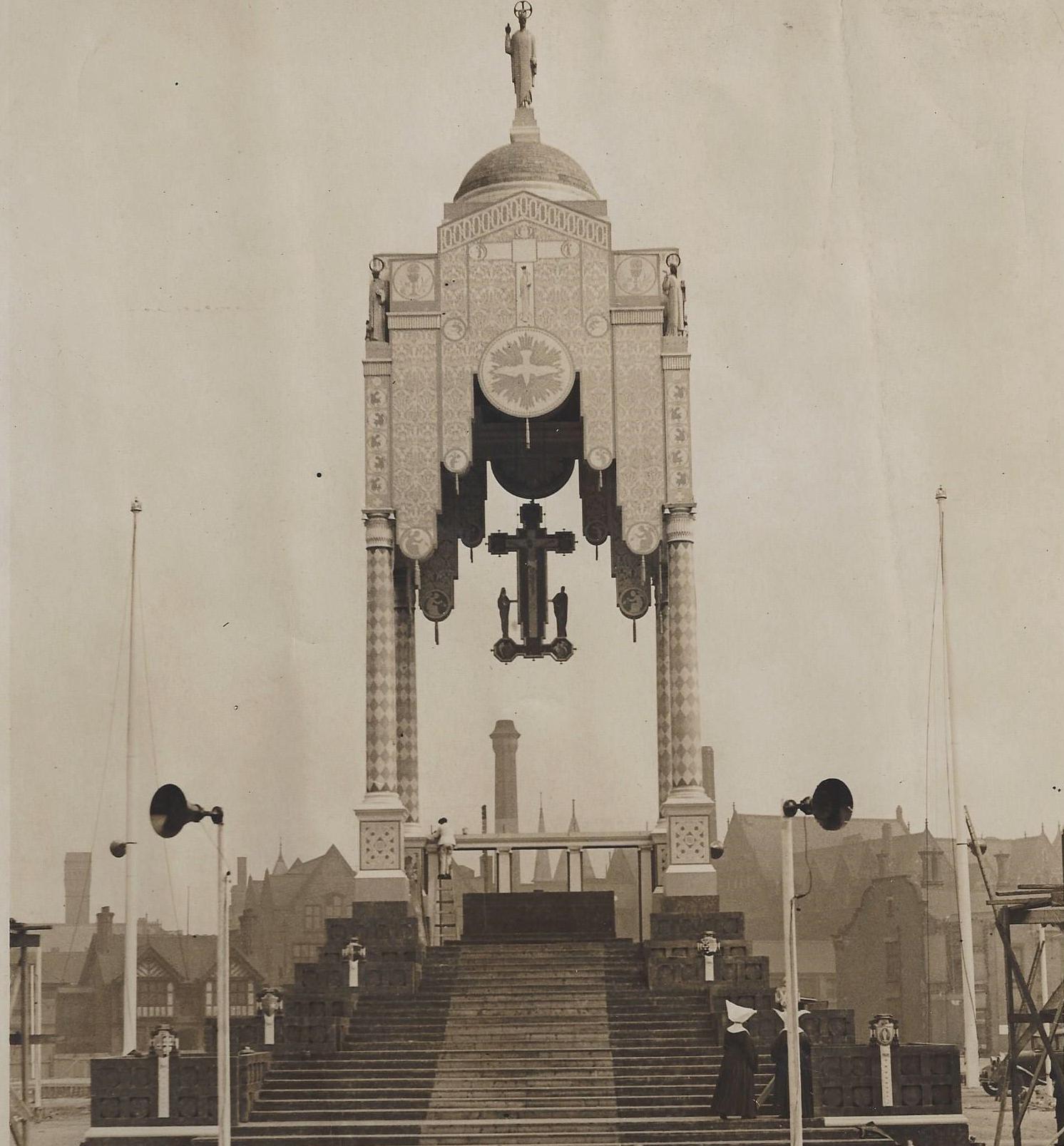
foreground, and a workman up a a result, families may receive water supplies for only two or three days in a fortnight – and this has dwindled to barely once a month during the coronavirus crisis.
Existing back-up water tanks on many roofs are old and rusted, particularly in older towns such as Bethlehem, and transported water is often contaminated.
Over 40 per cent of children suffer from chronic diarrhoea and other diseases related to a lack of water and hygiene.
Working in partnership with Pro Terra
Sancta and using local Christian tradesmen, FHL have installed 20 water stepladder is adding some finishing touches. The altar, like the great Cathedral itself, was designed by Sir Edwin Lutyens. You can see from the photograph that it is clearly the work of the architect behind the Thiepval Memorial to the missing of the Somme battlefields, unveiled in 1932, and the slightly earlier Arch of Remembrance in Leicester. Lutyens was also involved in the creation of the new imperial capital of New Delhi, a project recently completed when he was engaged to work on the Cathedral, and some of the design features of the altar could be influenced by Moghul art. It was certainly impressive at almost 100 feet tall, made of painted wood and plaster on a steel frame. There was a hanging rood and statues of the evangelists around the top of the columns. The canopy, made of glass and aluminium, was surmounted by a golden figure of Christ the King, to whom the Cathedral was to be dedicated at the suggestion of Pope Pius XI. The foundation stone was laid with due ceremony before 40,000 people on a Whit Monday of blazing sunshine, 5 June 1933. The altar was subsequently used for services and rallies on the Cathedral site until the outbreak of the war. The last major ceremony in which the altar played a part seems to have been Archbishop Downey’s funeral in 1953, though it continued in use for open air services and meetings until 1958. The following year the structure was reported to be in such a dilapidated state that it shouldn’t be used for any public events. It was finally dismantled and sold for scrap in the winter of 1961- 1962, when work towards the new Cathedral designed by Frederick Gibberd
FHL provide water tanks for Bethlehem
was getting under way. tanks in homes in the Bethlehem area. FHL said on their website: ‘We all know that access to clean water is a vital lifeline for everyone and particularly during these challenging times of Coronavirus when handwashing and hygiene are more important than ever these water tanks are a vital way that we can make sure Christian families have regular access to clean water.’
To donate to FHL, click here: https://www.friendsoftheholyland.org.uk/ge t-involved/donate-money
Liverpool and Australia
by Father Philip Inch – Synod Moderator
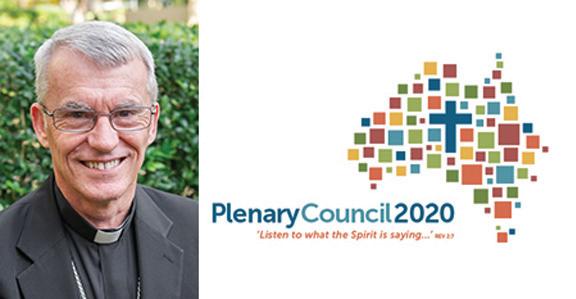
Last month we announced the revised dates for our Synod. One of the great advantages of the new timetable is that in the period between October and December 2020 we will be able to share with everyone what we are calling the long list of proposals. At the time of writing there have been almost 2500 proposals made to the Synod on the 4 themes. We have spent a great deal of time to ensure that everything that has been sent in has been considered. There has been some repetition. There have been some proposals made that are really for the local parish and not for a Synod and there have been some proposals that the Synod has heard but are not within the remit of a Diocesan Synod. (All of this will be reported to you.) Having taken a great deal of time reading, praying, discerning we are preparing the ‘long –list’. This list will be shared with the Synod members who will be invited to share them in their parishes and communities. This will enable everyone who wants to have a voice in what will become the final list of proposals, which will be announced in March 2021. Time would not have permitted us to do this in the original Synod timetable. We are also going to be able to add to the proposals the reflections (and proposals) that have emerged during the time of lockdown. We are still listening to God to find the answer to the question – what kind of Church does God want us to be. The opportunity for you to contribute to this will be open until 1 September. Please go to the Synod web site and make your lockdown proposals. www.synod2020.co.uk Across the other side of the world there is a national Synod throughout the Catholic Church in Australia. They too have had to revise their timetable in the light of the Coronavirus. It has been interesting to watch the development of the Australian Synod. They have called a Plenary Council – with the tag-line: ‘Listen to what the Spirit is saying.’ Just as with our Synod they began with a period of listening. They spent ten months in the listening and dialogue phase. They estimated that 222,000 people took part (we estimated that over 25,000 people took part in our listening exercises). From their listening they discerned 6 themes: The Church in Australia asks how God is calling us to be a Christ-centred Church that is:
• missionary and evangelising • inclusive, participatory and synodal • prayerful and Eucharistic • humble, healing and merciful • a joyful, hope-filled and servant community • open to conversion, renewal and reform.
These themes emerged after we had discerned our own 4 themes: • All called and gifted by God • Sharing the Mission of Jesus • How we pray together • Building community, nurturing belonging

So the question is did they copy us?
In Australia papers have been prepared on each of the themes. Each paper provides a reflection on some elements of the relevant pastoral reality, articulates a theological vision, outlines a number of challenges to be overcome, suggests prioritised questions to be answered and develops some proposals for change. Archbishop Costelloe SDB, Archbishop of Perth, who is chairing the process, said the papers are an important contribution to the Church in Australia’s ongoing discernment towards the Plenary Council. ‘While not the final word on the six thematic areas which emerged from the Listening and Dialogue process, I encourage everyone to receive them in the spirit of faith and discernment with which they have been written…They both invite and challenge us to continue to “listen to what the Spirit is saying”.’
If you want to follow the work that is taking place in Australia please look up Plenary Council 2020 and you will find lots of information. They have revised the timetable for their Synod (Plenary Council). The final gathering will be in July 2022. I wonder would there be space for a Synod Moderator (or two) from Liverpool to join them.
What people talked about

Plenary Council 2020
Cafod joins DEC coronavirus appeal
Cafod has joined forces with the Disasters Emergency Committee (DEC) to help millions of vulnerable people whose lives are at risk as the coronavirus pandemic spreads across refugee camps and countries suffering conflict. Families who have been forced to flee their homes in places including Syria, South Sudan, and the Democratic Republic of Congo, now face another deadly threat as coronavirus takes hold in new areas. Cafod Director, Christine Allen, said: ‘In the UK our struggle against coronavirus has entered the next phase, but in many of the world’s poorest communities, the fight has only just begun. Families who have fled conflict, and are living in crowded camps or makeshift shelters, are especially vulnerable. ‘We need your support to reach these communities and help people to cope as best they can when an outbreak of the virus strikes. In many places around the world, there are not enough hospital beds or supplies to treat everyone who falls ill. But promoting handwashing and providing personal protective equipment, health advice and food parcels can make a huge difference. ‘The first coronavirus case has been confirmed in north-west Syria, causing alarm for a region where camps are overcrowded, and hospitals in ruins, after nearly ten years of war. It is critical that we act now to reach millions of vulnerable people who have lost everything and no longer have ways of coping. Working with the Disasters Emergency Committee will allow us to scale up our response and reach more people in need.’ Donations to the DEC’s Coronavirus Appeal will support vulnerable families by: providing handwashing facilities, clean water, soap, and hand sanitiser; promoting public information

messages on ways people can stay safe and protect others and by supporting health systems and aid workers by providing training, personal protective equipment, and medical supplies for frontline responders.’ Cafod is already responding to the coronavirus crisis in some of the poorest countries in the world. Since launching its emergency appeal on 30 April, it has scaled up its support to local aid workers who are providing food and improving handwashing and sanitation facilities in countries across Africa, Asia, Latin America, and the Middle East. It is also supporting the training of faith leaders in hygiene promotion and working with churches to use their networks to share clear and accurate information on how communities can protect themselves from coronavirus. This includes messages on Catholic radio stations and producing posters in local dialects.
Bishop Tom Williams celebrated the final Mass of a series for those affected by the COVID-19 pandemic with a focus on those caring for and helping the sick and vulnerable in society. Each Thursday evening since 23 April a Bishop has celebrated a livestreamed Mass for the sick, their families, healthcare workers and carers. Bishop Tom, who worked as a hospital chaplain for many years, used his homily, preached in the Blessed Sacrament Chapel of Liverpool’s Metropolitan Cathedral of Christ the King on Thursday 9 July, to herald the tireless efforts of front-line carers. He likened carers to stonemasons carving the presence of Christ for the sick and vulnerable and said, ‘As people of faith, we believe that Jesus Christ, our Saviour, our seat of wisdom and understanding is our cornerstone. And we are His great design – His cathedral’. He went on to pay tribute to those working with the Caritas network saying, ‘A special thank you tonight to each and every one of you that form the Caritas network of England and Wales. This Mass is especially for you. It’s a network made up of 48 Catholic, diocesan and specialist Christian charities serving the poor and the vulnerable. Thanks to all of you. Each of you is working on that same workbench of our cathedral. Each of you have been stonemasons, carving the presence of Christ to those you meet –whether you know it or not’.
